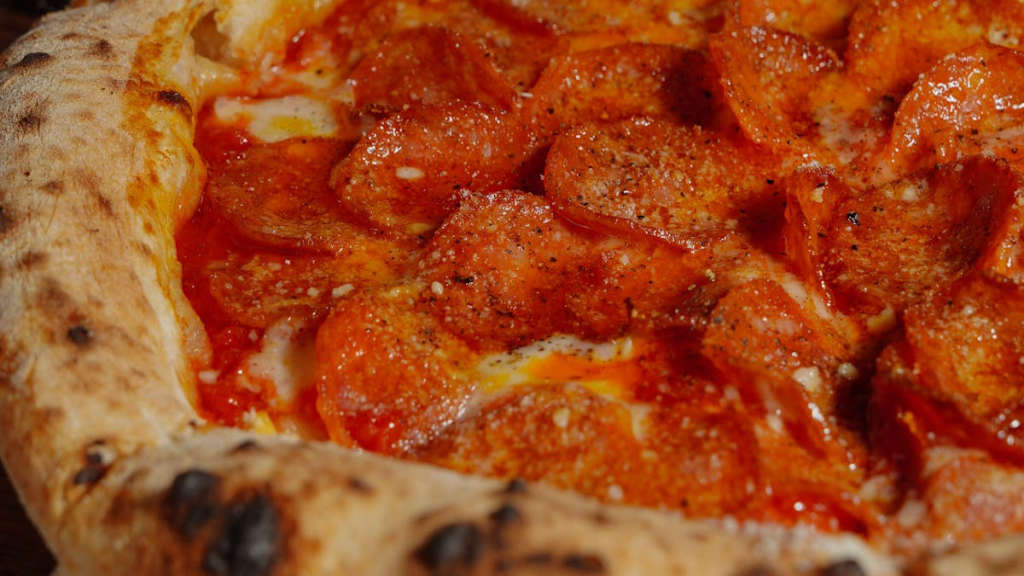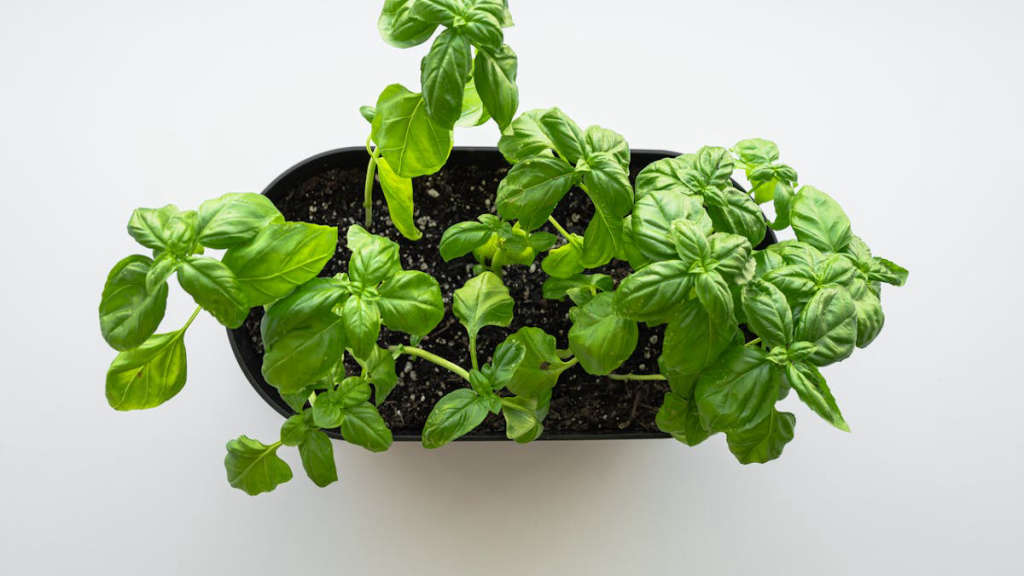Are you ready to savor the taste of summer with a mouthwatering Tomato-Oregano Pizza? Look no further than Nancy Silverton’s renowned recipe to transport your taste buds to Italy with each delightful bite. With the perfect combination of fresh tomato sauce, aromatic oregano, and a crispy homemade crust, this pizza is the epitome of Mediterranean flavors. Whether you’re hosting a summer gathering or simply craving a slice of authentic Italian cuisine, Nancy Silverton’s Tomato-Oregano Pizza is the answer.
The Taste of Summer: Nancy Silverton’s Tomato-Oregano Pizza Recipe Main Points
- Nancy Silverton’s Tomato-Oregano Pizza recipe: Discover the secrets to creating the perfect Tomato-Oregano Pizza with Nancy Silverton’s renowned recipe.
- Best Tomato-Oregano Pizza toppings: Explore delicious topping options to elevate the flavor of your pizza.
- Authentic Tomato-Oregano Pizza crust: Learn how to make a crispy and delicious crust that will take your pizza to the next level.
- Homemade Tomato-Oregano Pizza sauce: Uncover the recipe for a flavorful and aromatic sauce that is the heart of this pizza.
- Delicious Tomato-Oregano Pizza variations: Get creative with different variations and toppings to suit your personal taste.
- Tomato-Oregano Pizza cooking tips: Master the art of baking the perfect Tomato-Oregano Pizza with insider tips and techniques.

The Origin of Tomato-Oregano Pizza and Its Evolution
Tomato-Oregano Pizza, also known as Pizza Marinara, has a rich history that dates back to ancient times. The combination of tomatoes and oregano on a pizza has evolved over centuries, and its origin can be traced back to the Mediterranean region.
Nancy Silverton’s Tomato-Oregano Pizza recipe
One of the key figures in popularizing the Tomato-Oregano Pizza is Nancy Silverton, a renowned chef and cookbook author. Her recipe for Tomato-Oregano Pizza has become a classic and is widely celebrated for its simplicity and delicious flavors. The recipe calls for fresh tomatoes, oregano, and a flavorful crust that makes this pizza a timeless favorite.
Best Tomato-Oregano Pizza toppings
When it comes to topping a Tomato-Oregano Pizza, simplicity is key. The best toppings for this pizza include ripe, juicy tomatoes that are sliced thinly and seasoned with fresh oregano. A drizzle of olive oil and a sprinkle of sea salt perfectly complement the flavors of the tomatoes and oregano.
Authentic Tomato-Oregano Pizza crust
An authentic Tomato-Oregano Pizza is recognized by its thin and crispy crust. The dough is often made with high-quality flour, water, yeast, and a touch of olive oil. The crust is then baked at a high temperature to achieve the perfect texture and flavor, making it a staple in Italian cuisine.
It’s clear that Tomato-Oregano Pizza has a storied past and a bright future ahead. Its simple yet bold flavors continue to captivate pizza lovers around the world, and its evolution is a testament to the time-honored tradition of pizza-making.

How to Choose the Best Tomatoes for the Perfect Pizza
When it comes to making the perfect pizza, choosing the right tomatoes for your sauce and toppings is crucial. The type of tomatoes you use can greatly impact the flavor and texture of your pizza, so it’s important to select the best ones for the job. In this article, we’ll discuss how to choose the best tomatoes for your pizza, as well as some top tips for using them in your recipes.
Types of Tomatoes
There are several different types of tomatoes that are commonly used for pizza, each with its own unique characteristics. Some popular choices include Roma tomatoes, San Marzano tomatoes, and cherry tomatoes. Roma tomatoes are known for their meaty texture and low moisture content, making them ideal for pizza sauce. San Marzano tomatoes, on the other hand, are prized for their rich flavor and low acidity, making them a popular choice for both sauce and toppings. Cherry tomatoes are smaller and sweeter, making them a great option for adding bursts of flavor to your pizza.
What to Look for
When selecting tomatoes for your pizza, look for ones that are firm and free of blemishes or bruises. The skin should be smooth and taut, and the tomatoes should feel heavy for their size. Avoid tomatoes that are overly soft or mushy, as these may be overripe and not suitable for pizza making. If possible, try to buy tomatoes that are in season and locally grown, as these will often have the best flavor and freshness.
| Name | Characteristics | Best Use |
|---|---|---|
| Roma Tomatoes | Meaty texture, low moisture | Sauce |
| San Marzano Tomatoes | Rich flavor, low acidity | Sauce, toppings |
| Cherry Tomatoes | Small, sweet | Toppings |
Once you’ve chosen the best tomatoes for your pizza, be sure to pair them with other high-quality ingredients for the best results. Whether you’re making a homemade Tomato-Oregano Pizza sauce, using Nancy Silverton’s Tomato-Oregano Pizza ingredients, or experimenting with delicious Tomato-Oregano Pizza variations, the key to a great pizza lies in using the freshest and most flavorful tomatoes you can find. By following these tips, you can ensure that your pizza is bursting with the best tomato taste possible.

The Art of Making Homemade Pizza Dough
Are you tired of ordering pizza from the same old place and want to try something new? Why not make your own homemade pizza dough? It may seem like a daunting task, but with the right recipe and a little bit of patience, you can create a delicious and authentic pizza right in your own kitchen.
Gather Your Ingredients
To make homemade pizza dough, you will need flour, yeast, salt, water, and olive oil. These simple and readily available ingredients are all you need to get started on your pizza-making adventure.
Mixing and Kneading
Once you have gathered your ingredients, it’s time to mix and knead the dough. Combine the flour, yeast, and salt in a bowl, and gradually add the water and olive oil. Knead the dough until it becomes smooth and elastic, which typically takes about 10 minutes.
Let it Rise
After kneading the dough, it’s important to let it rise for at least an hour. This allows the yeast to work its magic and give the dough its airy and chewy texture.
Rolling Out the Dough
Once the dough has risen, it’s time to roll it out into a pizza shape. You can use a rolling pin to achieve the desired thickness, whether you prefer a thin and crispy crust or a thicker, chewier one.
Top it Off
Now comes the fun part – adding your favorite toppings! Whether you’re a fan of classic margherita pizza with fresh tomatoes and oregano or prefer something more adventurous, the options are endless when it comes to topping your homemade pizza.
With these simple steps, you can master the art of making homemade pizza dough and create a delicious and personalized pizza that will surely impress your friends and family.

Exploring the Flavor Profile of Oregano in Pizza
When it comes to the perfect pizza, the right combination of flavors is essential. One of the key ingredients that contribute to the delicious taste of pizza is oregano. Oregano is a popular herb that is widely used in Italian cuisine, particularly in pizza making. Let’s explore the flavor profile of oregano and how it enhances the taste of pizza.
1. Aromatic and Earthy
Oregano has a strong, aromatic flavor with hints of earthiness. When added to pizza, it provides a warm and slightly bitter taste that complements the savory flavors of the cheese and meat. The aroma of oregano also adds depth to the overall taste experience.
2. Versatile and Complementary
Oregano is a versatile herb that pairs well with a variety of ingredients commonly found on pizza, such as tomatoes, garlic, and onion. Its ability to complement these flavors makes it a popular choice for enhancing the overall taste of the pizza. Whether it’s used fresh or dried, oregano can elevate the flavor profile of the dish.
3. Balancing the Flavors
One of the key roles of oregano in pizza is its ability to balance the flavors. Its slightly bitter and peppery taste helps cut through the richness of the cheese and meat, creating a more harmonious and well-rounded flavor profile. Oregano adds a refreshing and palate-cleansing element to each bite of pizza.
Conclusion
In conclusion, oregano plays a vital role in shaping the flavor profile of pizza. Its aromatic, earthy, and versatile nature makes it a perfect addition to this beloved dish. Whether sprinkled on top as a finishing touch or infused into the sauce, oregano enhances the overall taste experience and contributes to the irresistible allure of pizza.
The Importance of Quality Ingredients in Nancy Silverton’s Pizza Recipe
When it comes to creating the perfect pizza, one of the most crucial elements is the use of high-quality ingredients. Renowned chef Nancy Silverton understands the significance of using top-notch components in her pizza recipe, and it’s what sets her pizza apart from the rest.
From the fresh tomatoes to the premium cheese and the carefully sourced flour, every ingredient plays a pivotal role in the taste and texture of the final product. Silverton’s attention to detail and insistence on quality is what makes her pizza truly exceptional.
Using Fresh, Local Ingredients
Silverton’s commitment to using fresh, local ingredients is evident in every bite of her pizza. She believes that the flavor of the ingredients directly impacts the overall taste of the pizza, which is why she goes to great lengths to source the best produce and dairy for her recipes.
Additionally, Silverton’s dedication to using artisanal ingredients means that she supports local farmers and producers, contributing to the sustainability of the community while also ensuring the highest quality for her dishes.
The Impact on the Final Product
By using high-quality ingredients in her pizza recipe, Silverton is able to create a rich, flavorful, and satisfying pizza that stands out from the rest. The fresh, vibrant flavors of the ingredients shine through, creating a truly memorable dining experience for anyone lucky enough to enjoy her pizza.
Ultimately, the importance of using top-notch ingredients in Nancy Silverton’s pizza recipe cannot be overstated. It is the foundation of her culinary philosophy and the key to the unparalleled success of her delicious pizzas.
Tips for Achieving the Ultimate Crust Texture
When it comes to baking, achieving the perfect crust texture can make all the difference in the final product. Whether you’re baking a pie, pastry, or bread, the crust is often what sets a good baked item apart from a great one. Here are some tips for achieving the ultimate crust texture:
1. Use Cold Ingredients
One of the key factors in achieving a flaky and crispy crust is to start with cold ingredients. This means using cold butter, cold water, and even chilling your flour before mixing. Keeping everything cold helps create layers in the crust, which translates to a flakier texture.
2. Don’t Overwork the Dough
When mixing and kneading your dough, avoid overworking it. Overworking the dough can lead to tough and dense crusts, rather than the desired flaky texture. Mix the ingredients until just combined, and then stop. A few lumps and bumps are okay – they’ll contribute to the flakiness of the final crust.
3. Brush with Egg Wash
To achieve a golden, shiny crust, consider brushing your baked goods with an egg wash before baking. The egg wash helps promote browning and adds a beautiful sheen to the crust. It’s a simple yet effective way to elevate the texture and appearance of your crust.
Remember, the crust is often the first thing people notice about a baked item, so taking the time to perfect it can make a big difference in the overall enjoyment of the dish.
By following these tips, you can elevate your baking game and achieve the ultimate crust texture, whether you’re baking pies, pastries, or bread. Remember to use cold ingredients, avoid overworking the dough, and consider using an egg wash for a beautiful finish.
Pairing Wine and Beer with Tomato-Oregano Pizza
Pairing wine and beer with your favorite dishes can greatly enhance your dining experience. When it comes to a classic dish like tomato-oregano pizza, choosing the right beverage can elevate the flavors to a whole new level. Here are some key tips to keep in mind when pairing wine and beer with tomato-oregano pizza:
Pairing Wine with Tomato-Oregano Pizza
- Medium-bodied red wines such as Merlot or Chianti complement the acidity of the tomatoes and the earthy flavor of the oregano.
- For a white wine option, try a crisp and acidic Sauvignon Blanc or a light Pinot Grigio to contrast the richness of the cheese and the savory elements of the pizza.
- Remember to consider the toppings on your pizza when choosing a wine. For example, if your pizza has a lot of spicy sausage or pepperoni, a slightly sweeter red wine like a Zinfandel can balance out the heat.
Pairing Beer with Tomato-Oregano Pizza
- For a classic tomato-oregano pizza, a light and refreshing pilsner or lager can cleanse the palate between bites, making it a perfect match for this dish.
- Keep in mind that the carbonation in beer can help cut through the richness of the cheese and the grease of the pepperoni, making it a great palate cleanser.
- Consider trying a craft IPA with a strong hop profile for a more intense flavor pairing with your pizza.
Pairing the right wine or beer with your tomato-oregano pizza can truly enhance the flavors of the dish, so don’t be afraid to experiment and find your perfect match!
Health Benefits of Tomatoes and Oregano in Pizza
When it comes to pizza, tomatoes and oregano are not just delicious toppings, but they also offer a range of health benefits. Let’s take a closer look at how these ingredients can contribute to your well-being.
Tomatoes
Tomatoes are a rich source of vitamins and minerals, including vitamin C, potassium, and folate. They also contain antioxidants such as lycopene, which has been linked to a reduced risk of heart disease and certain types of cancer. Additionally, the high water content in tomatoes can contribute to overall hydration and skin health.
Oregano
Oregano is known for its antimicrobial and antioxidant properties. It contains compounds that may help reduce inflammation and protect against harmful bacteria. Oregano also provides small amounts of fiber, iron, and calcium, contributing to a well-rounded diet.
Health Benefits in Pizza
When combined in a pizza, the health benefits of tomatoes and oregano can be enjoyed in a delicious and convenient way. However, it’s important to note that the overall nutritional value of pizza can be influenced by other ingredients such as cheese and dough. Opting for whole grain crust and moderate cheese can help maximize the health benefits of a pizza.
| Ingredient | Health Benefits |
|---|---|
| Tomatoes | Rich in vitamins, minerals, and antioxidants. Linked to reduced risk of heart disease and cancer. |
| Oregano | Antimicrobial and antioxidant properties. Contains compounds that may reduce inflammation and protect against harmful bacteria. |
In conclusion, the combination of tomatoes and oregano in a pizza not only adds delicious flavor but also provides various health benefits. When consumed as part of a balanced diet, pizza can be a satisfying and nutritious meal option.
Creative Variations of Tomato-Oregano Pizza Toppings
When it comes to pizza toppings, tomato and oregano are classic choices that never fail to please the taste buds. However, if you’re looking to add a creative twist to your pizza, consider trying out some unique variations of tomato-oregano pizza toppings. Here are a few ideas to inspire your next pizza creation:
1. Mediterranean Inspired:
For a taste of the Mediterranean, consider topping your tomato-oregano pizza with ingredients such as feta cheese, kalamata olives, red onions, and roasted red peppers. This combination of flavors will transport you straight to the sunny shores of Greece.
2. Veggie Delight:
If you’re a fan of vegetables, why not load up your pizza with an assortment of colorful veggies? Think sliced mushrooms, bell peppers, cherry tomatoes, and spinach. Not only will this add a burst of freshness to your pizza, but it will also provide a healthy dose of vitamins and nutrients.
3. Spicy Kick:
For those who like a bit of heat, consider adding some spicy toppings to your tomato-oregano pizza. Try sprinkling on some crushed red pepper flakes, adding slices of spicy pepperoni, or drizzling on a spicy sriracha sauce. Just be sure to have a cold drink on hand!
By experimenting with different toppings, you can take your tomato-oregano pizza to new heights and discover a whole world of delicious flavor combinations. Whether you prefer a classic margherita pizza or want to spice things up with some bold new toppings, the options are endless. So go ahead, get creative, and let your imagination run wild!
The Cultural Significance of Tomato-Oregano Pizza in Mediterranean Cuisine
The tomato-oregano pizza holds a special place in the rich culinary traditions of Mediterranean cuisine. This iconic dish is not only a popular choice for pizza lovers worldwide but also carries significant cultural and historical importance in the region.
Historical Origins
The origins of tomato-oregano pizza can be traced back to Naples, Italy, where the dish first gained popularity in the late 18th century. The use of tomatoes, which were brought to Europe from the Americas, revolutionized Italian cuisine and gave birth to the iconic pizza we know today. Oregano, a staple herb in Mediterranean cooking, further enhanced the flavors of the tomato-based pizza, creating a timeless culinary classic.
Symbolism and Tradition
In Mediterranean culture, the tomato-oregano pizza is more than just a dish; it is a symbol of community and togetherness. Families and friends often gather around a table to share a freshly baked pizza, creating cherished memories and strengthening social bonds. The act of making and enjoying this pizza has become a tradition that is deeply ingrained in the Mediterranean way of life.
Culinary Influence
The tomato-oregano pizza has also had a profound impact on the global culinary scene. Its simple yet flavorful combination of ingredients has inspired countless variations and adaptations in different parts of the world. Whether it’s the thin-crust Neapolitan style or the deep-dish Chicago version, the influence of this Mediterranean classic can be seen in pizzerias and restaurants everywhere.
Conclusion
In conclusion, the tomato-oregano pizza holds a special place in Mediterranean cuisine, both for its delicious flavors and its cultural significance. This iconic dish has stood the test of time and continues to bring people together, transcending borders and connecting diverse cultures through the shared love of food.
Conclusion
In conclusion, Nancy Silverton’s Tomato-Oregano Pizza recipe is the perfect embodiment of summer flavors. The combination of sweet, juicy tomatoes and aromatic oregano creates a taste sensation that is unrivaled. Whether you’re hosting a backyard barbecue or simply craving a taste of Italy, this pizza is sure to please. Try your hand at Nancy Silverton’s Tomato-Oregano Pizza recipe and transport your taste buds to a sun-soaked Italian piazza.
Frequently Asked Questions
What type of tomatoes should I use for the pizza?
You can use San Marzano or Roma tomatoes for the pizza.
Can I use dried oregano instead of fresh oregano?
Yes, you can use dried oregano as a substitute for fresh oregano if needed.
How long should I let the pizza dough rise?
The pizza dough should rise for about 1-2 hours at room temperature.
What temperature should I bake the pizza at?
Preheat your oven to 500°F (260°C) for best results.
Do I need a pizza stone to make this pizza?
While a pizza stone can help achieve a crispy crust, you can also use a baking sheet or cast iron skillet.
Can I make the pizza dough in advance?
Yes, you can make the pizza dough ahead of time and store it in the refrigerator for up to 2 days.
Can I freeze the pizza dough?
Yes, you can freeze the pizza dough for up to 3 months. Allow it to thaw in the refrigerator before using.
Should I remove the tomato seeds before using them on the pizza?
It’s best to remove the seeds from the tomatoes to prevent the pizza from becoming too watery.
How do I reheat leftover pizza?
You can reheat leftover pizza in a preheated oven at 375°F (190°C) for about 10 minutes or until heated through.
Can I add other toppings to the pizza?
Feel free to customize the pizza with additional toppings such as cheese, basil, or pepperoni.
















0 Comment